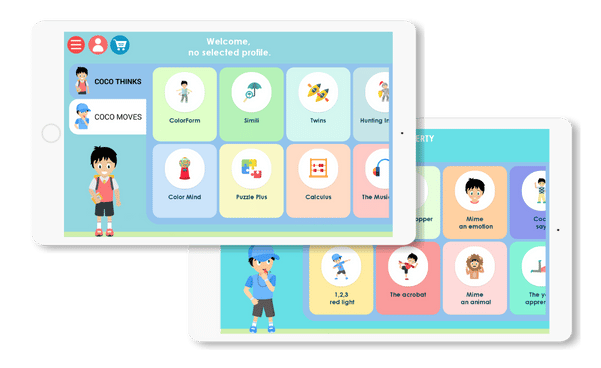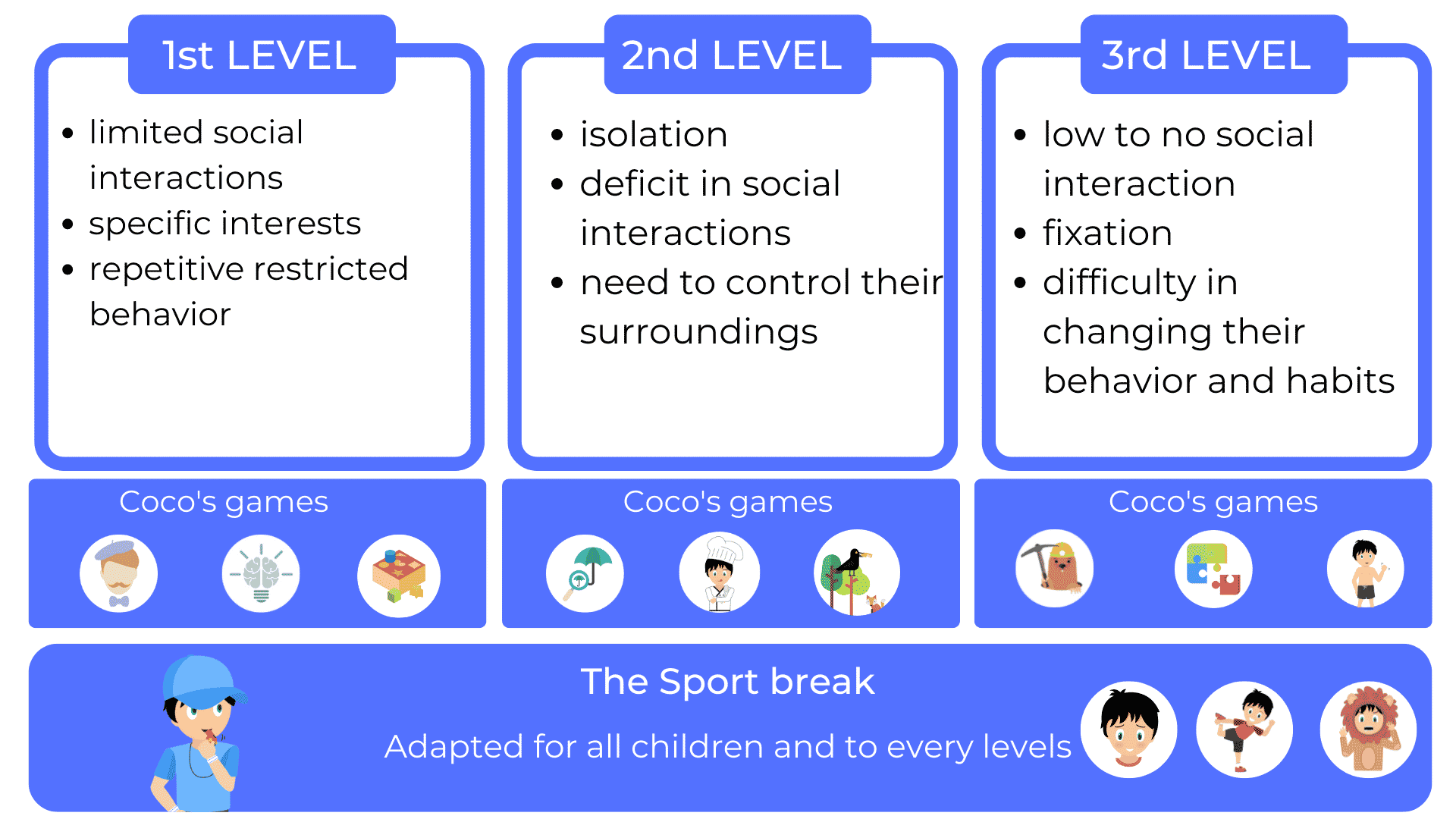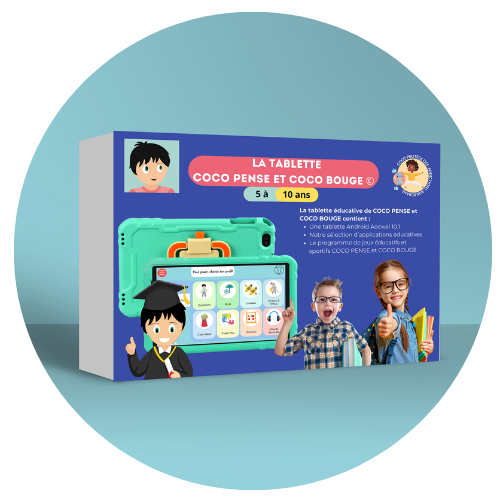Emotions are often difficult to understand and interpret, even on a person without a disorder. It is therefore normal to have some difficulty understanding the emotions transmitted by a person who functions differently from you, or who has a disorder such as autism spectrum disorder (ASD).
This does not mean that you will not be able to understand and interpret the emotions of others, you just need to take the time to identify the codes and decipher the different emotions. To do this, we have prepared an article giving you many tips and suggestions for understanding emotions. So, don’t wait any longer to read on and learn more!
THE EXPRESSION OF VARIOUS EMOTIONS
Recognizing and interpreting emotions accurately is a complex task, even for neurotypical individuals. It often involves deciphering subtle cues from facial expressions, body language, and vocal tones. However, for autistic individuals, this process can be particularly challenging as they may struggle with recognizing and expressing emotions in the same way as neurotypical individuals. This difficulty in understanding and sharing feelings can create barriers to social interaction and communication for individuals on the autism spectrum. Despite these challenges, it’s important to recognize that everyone, regardless of neurotype, goes through a series of steps to express emotions effectively.
From infancy, individuals learn to convey emotions through various channels, including facial expressions, gestures, and vocalizations. This process of emotional expression is an integral part of human development and continues throughout life. While the progression may differ for individuals with autism, the fundamental mechanisms of expressing emotions remain universal. Each person, whether autistic or not, navigates through learning to identify and communicate their emotions, albeit at varying paces and with different levels of complexity.
For autistic individuals, interventions such as social skills training and therapy may be beneficial in facilitating emotional expression and understanding. These interventions often focus on teaching individuals how to recognize and interpret emotional cues, as well as providing strategies for effectively expressing their own emotions. By fostering an environment of understanding and support, individuals with autism can develop the skills necessary to navigate social interactions and communicate their feelings more effectively. Thus, while the journey of emotional expression may present unique challenges for autistic individuals, with the right support and resources, they can develop the skills needed to express themselves and connect with others in meaningful ways.
THE EMOTION IN AN AUTISTIC PERSON
For individuals on the autism spectrum, navigating the realm of emotions can be fraught with challenges. While they experience emotions and desire to communicate them like anyone else, they often encounter difficulties in expressing themselves effectively. This can stem from obstacles in recognizing facial expressions and imitating emotional cues from others, hindering their ability to understand and interpret their own emotions accurately on a day-to-day basis.
Understanding that the emotional communication of autistic individuals differs from neurotypical individuals is crucial, here is a link if you want to read more about Assessing the Importance of Expression Intensity. Deciphering these unique emotional codes requires patience and careful observation to interpret each sign correctly. Individuals with autism may employ various methods to recognize emotions, though some may prove more challenging to analyze than others. As a result, it’s not uncommon for individuals on the spectrum to struggle with expressing certain emotions throughout their lives.
By acknowledging and accommodating these differences, we can foster greater understanding and support for individuals with autism in their journey of emotional expression and communication. Through patience, empathy, and a willingness to learn, we can create an inclusive environment where everyone’s emotional experiences are valued and respected.
UNDERSTANDING THE DIFFERENT EMOTIONS
To understand your emotions, you put words and habits on them. The same is true for the emotions of people with autism, although the codes are different. In fact, an autistic baby will develop in a certain way and they will learn to express their emotions in a distinct way. We can often see similarities with the development of a typical baby when we analyze the emotional development of a person with autism spectrum disorder.
Even though emotions are passed on through gestures as we grow older, there are often barriers to verbalizing certain feelings. This problem often leads people to believe that an autistic person will be devoid of feelings when this idea is totally false.
It is therefore important to be aware that an autistic person will often have difficulty effectively verbalizing what they are feeling, and this discomfort can quickly become overwhelming. The autistic person will thus encounter obstacles in interacting with others because their codes will be different. It is important to take the time to listen to an autistic person, to take the time to understand their codes, their language. This will allow you to read the emotions properly and to react in the right way. Without forgetting that an autistic person who will be understood, will be able to more easily gain self-confidence and try to develop their emotional language to go even further in the exchanges.
You will therefore need to learn to read emotions and to help the person you are talking to read your feelings as well. People with autism will often analyze emotions differently and will misinterpret your emotions, which can be confusing. They will take the time to deal with challenges to better manage their understanding of others, while taking advantage of your patience to feel understood by another person. This will require patience.
RECOGNIZING EMOTIONS WITH COCO MOVES
In our educational app COCO, there’s a feature called “Mime an Emotion” within the Coco Moves section, where children can learn to recognize their emotions through interactive gameplay. By accessing the question mark icon, users can access resources aimed at improving their understanding of various emotions. This game not only enhances emotional literacy but also fosters engagement and enjoyment within the learning process.
Moreover, to promote a healthy balance between screen time and physical activity, this emotion-miming game is integrated into the app’s break feature. Every 15 minutes, children are prompted to participate in an active break, during which they can choose from a selection of physical activities, including the opportunity to mime different emotions. This encourages children to take regular breaks from screen use, promoting both physical and emotional well-being.
By incorporating such features, COCO provides a holistic approach to learning and development, addressing both cognitive and emotional skills in an engaging and accessible manner. Through these interactive experiences, children not only expand their emotional vocabulary but also cultivate healthy habits for managing screen time and staying active.
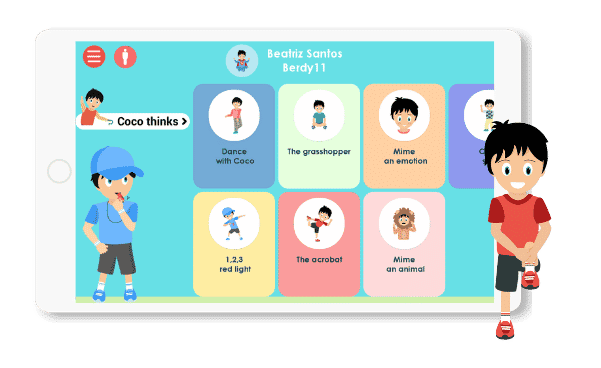
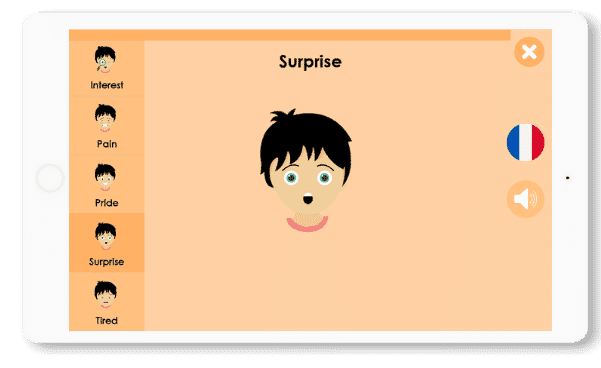
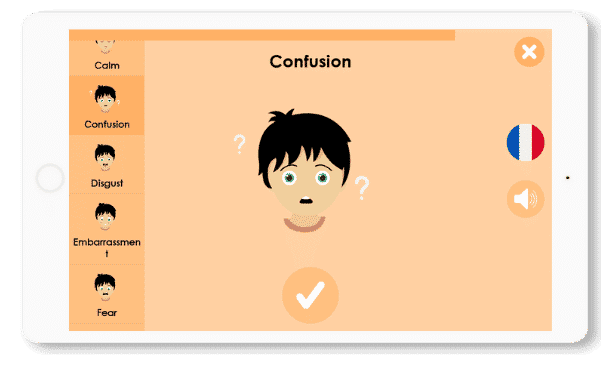
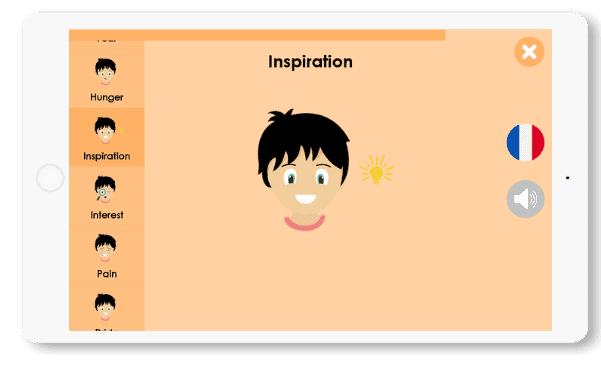
SURPRISE
You are surprised when you are amazed at something, at a person or an object.
It is that feeling when you receive an unexpected gift. So in this situation, you have your eyes and mouth wide open and you cannot wait to open your gift.
CONFUSION
When you are confused you are usually lost because of something that happened. You can even forget the name of a person or the name of an object.
To mimic confusion, you can frown your eyebrows, shrug your shoulders or even form a big ‘O’ with your mouth.
INSPIRATION
Inspiration is what happens when you imagine and create things just by thinking of it. Like when you are drawing, writing, or playing with your toys and making up stories.
When you’re feeling inspired you wrinkle your eyes, you scratch your head a little and you smile when the idea comes.
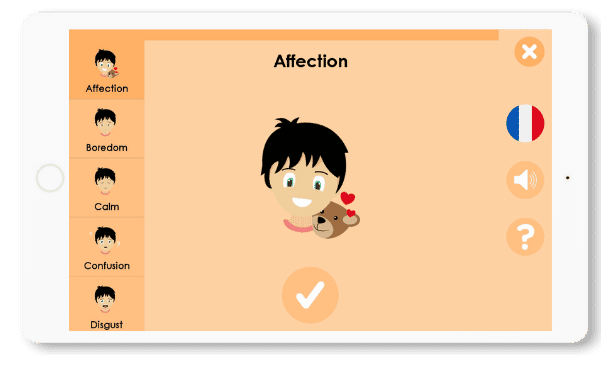
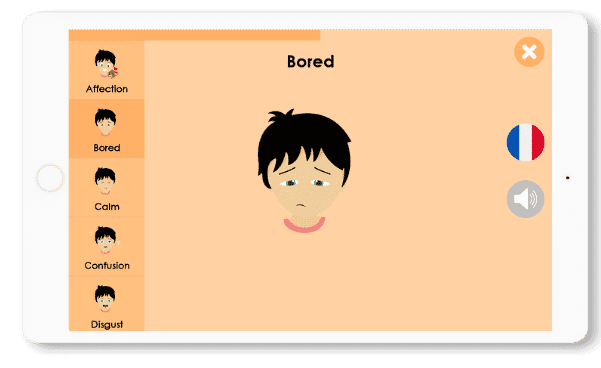
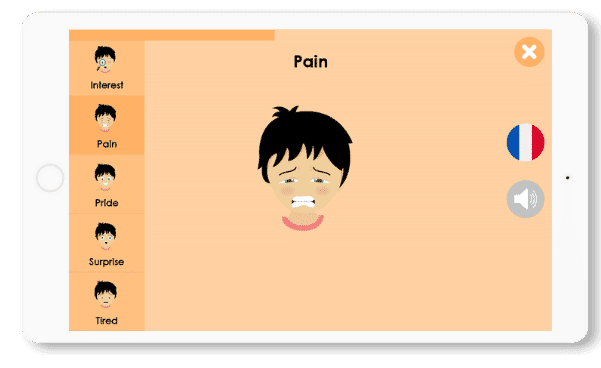
AFFECTION
Affection is something you feel when you are moved by something, when you are thinking positive thoughts about a friend, a family member or a pet.
Here you can smile and think about good time. You can give a hug or kiss someone, tell your classmate that you like them.
BOREDOM
Boredom happens when you don’t care for what you are doing, you want to do something else like talking to your friends and not listen to the person in front of you.
You can blow really loudly and roll your eyes. You can also wiggle in your chair.
PAIN
Pain is a feeling you don’t like, you usually feel it when you hurt yourself, and that is physical pain.
It can also be when you are missing someone or something very much.
To express pain, you can wrinkle your eyes and grit your teeth. You can also touch the part where you are hurt.
Other articles you might be interested in:
Using Technology to Enhance Communication in Autism Speech Therapy
Autism Spectrum Disorder (ASD) presents unique challenges in communication, making speech therapy an essential...
Effective Autism Behavior Therapy: Improving Outcomes
Autism is a complex neurodevelopmental disorder that affects individuals in various ways. It is characterized by...
Autism Therapy at Home: Effective Strategies
Autism Spectrum Disorder (ASD) is a neurodevelopmental disorder that affects individuals in various ways. It is...


